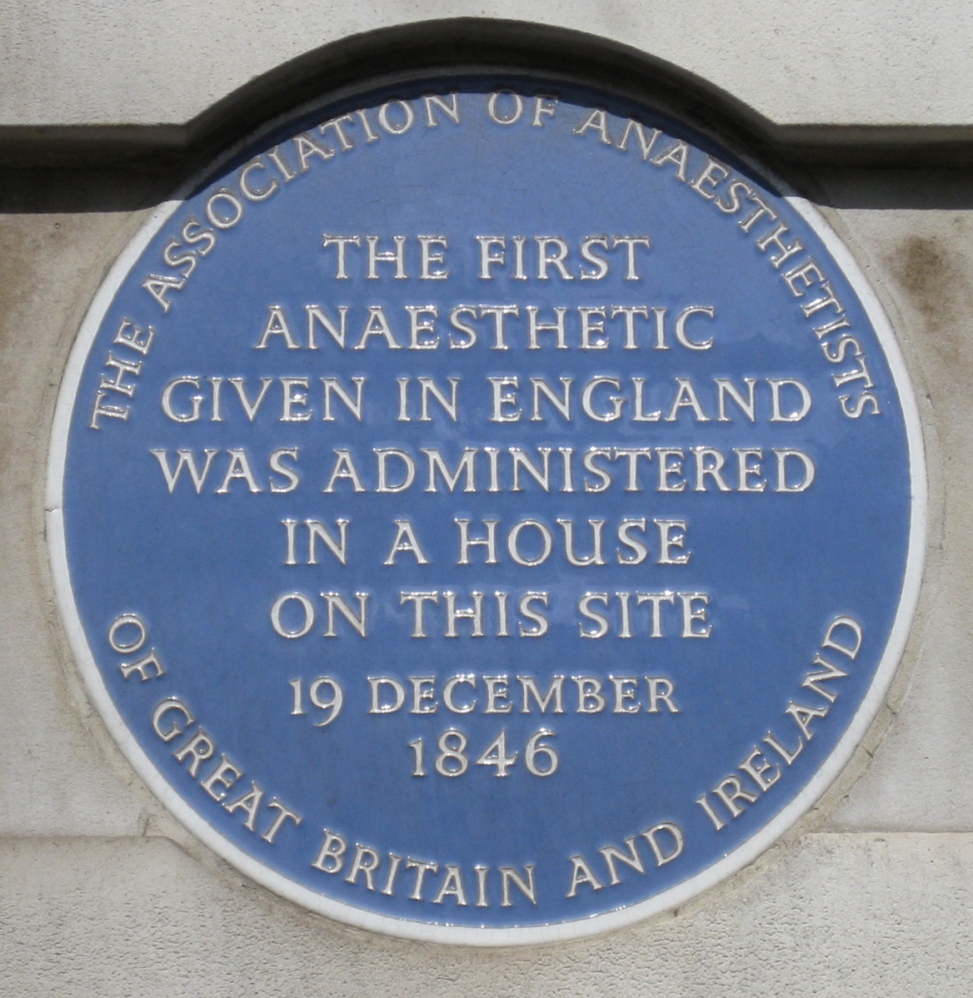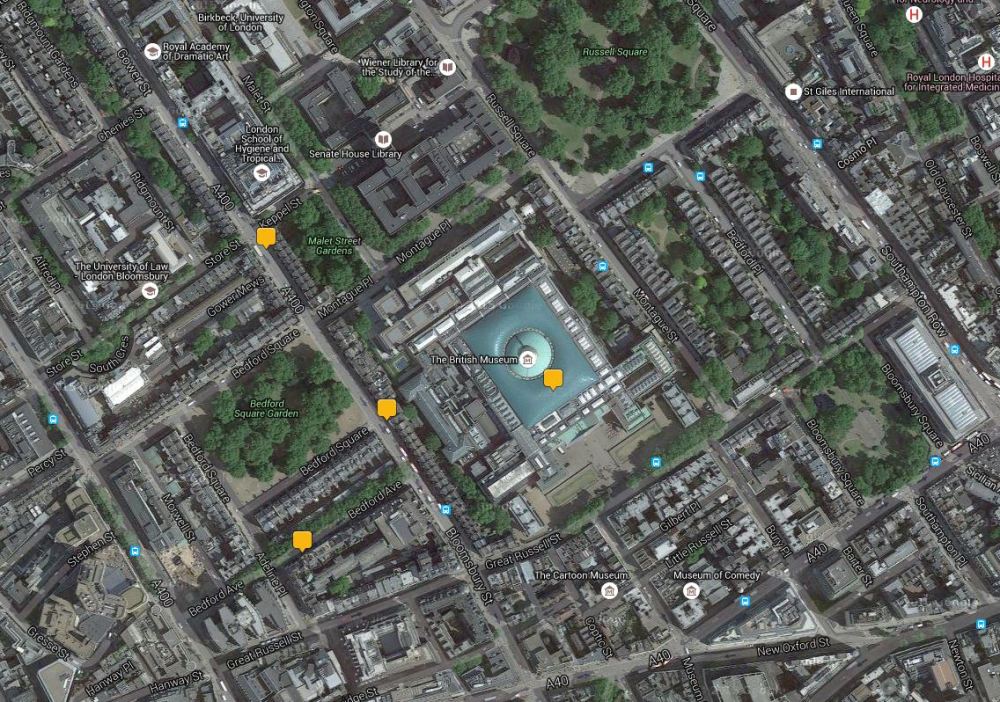Bloomsbury Doors are for Norm’s Thursday Doors, April 14.
Bloomsbury is an area of the London Borough of Camden, in central London, between Euston Road and Holborn, developed by the Russell family in the 17th and 18th centuries into a fashionable residential area. It is notable for its array of garden squares, literary connections (exemplified by the Bloomsbury Group), and numerous cultural, educational and health-care institutions.
History
The earliest record of what would become Bloomsbury is in the 1086 Domesday Book, which states that the area had vineyards and “wood for 100 pigs”. But it is not until 1201 that the name Bloomsbury is first noted, when William de Blemond, a Norman landowner, acquired the land. The name Bloomsbury is a development from Blemondisberi – the bury, or manor, of Blemond.
At the end of the 14th century, Edward III acquired Blemond’s manor, and passed it on to the Carthusian monks of the London Charterhouse, who kept the area mostly rural.
In the 16th century with the Dissolution of the Monasteries, Henry VIII took the land back into the possession of the Crown and granted it to Thomas Wriothesley, 1st Earl of Southampton. The Russell family became landowners in the 18th century.
![Queen_Square_Bloomsbury[1]](https://port4u.files.wordpress.com/2016/04/queen_square_bloomsbury1.jpg?w=1000)
Historically, Bloomsbury is associated with the arts, education, and medicine. The area gives its name to the Bloomsbury Group of artists, the most famous of whom was Virginia Woolf, who met in private homes in the area in the early 1900s, and to the lesser known Bloomsbury Gang of Whigs formed in 1765 by John Russell, 4th Duke of Bedford.
Bloomsbury Square, laid out in 1660 by Thomas Wriothesley, 4th Earl of Southampton, was the first to be named as a square.
Bedford Square, built between 1775 and 1783, is still surrounded by Georgian town houses.


The British Museum, which first opened to the public in 1759 in Montagu House, is at the heart of Bloomsbury. At the center of the museum the space around the former British Library Reading Room, which was filled with the concrete storage bunkers of the British Library, is today the Queen Elizabeth II Great Court, an indoor square with a glass roof designed by British architect Norman Foster.


Also in Bloomsbury is the Foundling Museum, close to Brunswick Square. The Dickens Museum is in Doughty Street. The Petrie Museum and the Grant Museum of Zoology are at University College London in Gower Street.
Charles Darwin (1809–1882) lived at 12 Upper Gower Street in 1839. And…



Source for text: https://en.wikipedia.org/wiki/Bloomsbury
Great post!
LikeLiked by 1 person
Interesting post and great photographs.
LikeLike
Thank you very much and thanks for visiting.
LikeLiked by 1 person
Beautiful photos and very interesting history – thanks!
LikeLike
Your welcome. Glad you liked it.
LikeLiked by 1 person
Hi Sherry, what a wonderful story and images! Thank you so much for sharing this 🙂 Have a great weekend..
LikeLike
Thanks Indah, glad you enjoyed it.
LikeLike
Good old London. I have to go back there soon. Excellent series, Sherry.
LikeLiked by 1 person
Thanks Reinhold.
LikeLiked by 1 person
Interesting history and wonderful doors! I loved that first door. It’s stunning with the those great windows with red trim on either side, and the fantastic armament in the insets beside the door.
I love it.
LikeLiked by 1 person
Thank you so much for you kind words.
LikeLiked by 1 person
Nice collection again this week Sherry. I absolutely love that first one; the deep rich green, the arrows, the entire entrance is so classy.
Great post!
LikeLiked by 1 person
Thank you very much Norm.
LikeLiked by 1 person
Stunning collection. I cannot imagine living in such a historical place. How magnificent is that one with the arrows in the arched insets? Mercy! But the following one, well, it’s not imposing, despite its clear status. It looks so warm and inviting, like only good things could happen there.
Fantastic post, thank you 🙂
LikeLike
Thank you. London is a terrific place to visit. That’s the last of my London doors.
LikeLiked by 1 person
I love that second one, Sherry. It’s not only impressive, but welcoming.
janet
LikeLike
Thanks. That is my favorite too. The golden light helps make it welcoming.
LikeLike
I like this a lot.
LikeLiked by 1 person
A really interesting read and great photos. 🙂
LikeLiked by 1 person
Thank you. Glad you liked my selections from Wikipedia.
LikeLike